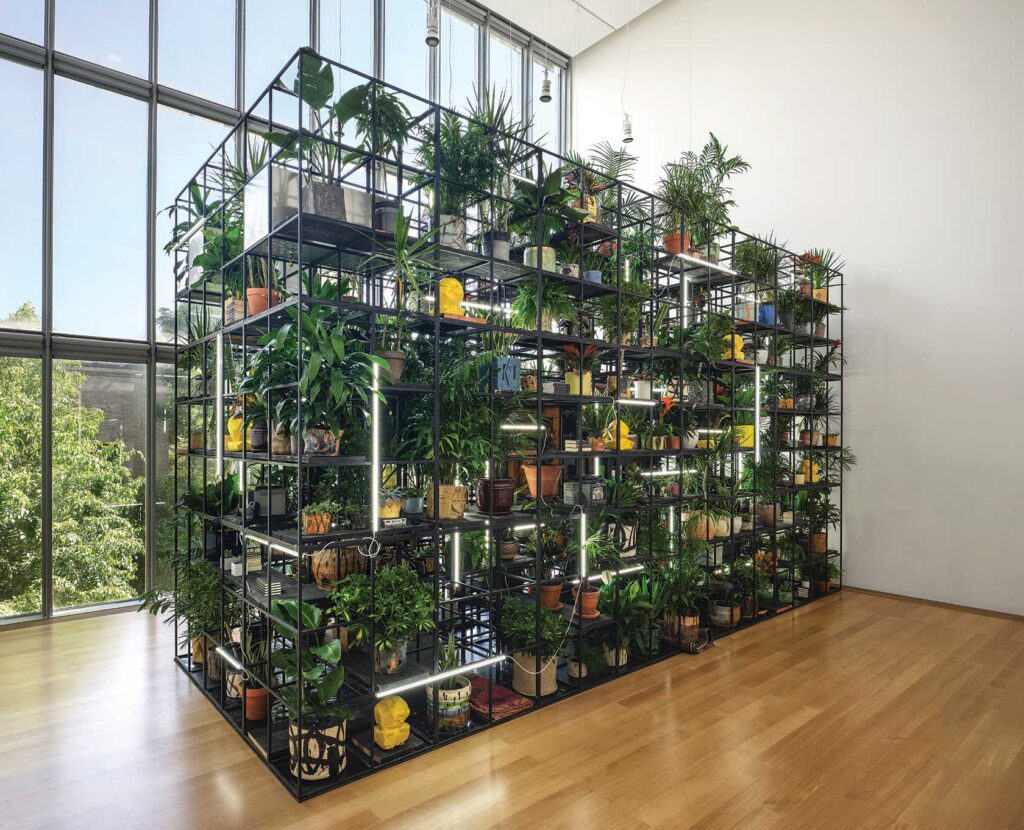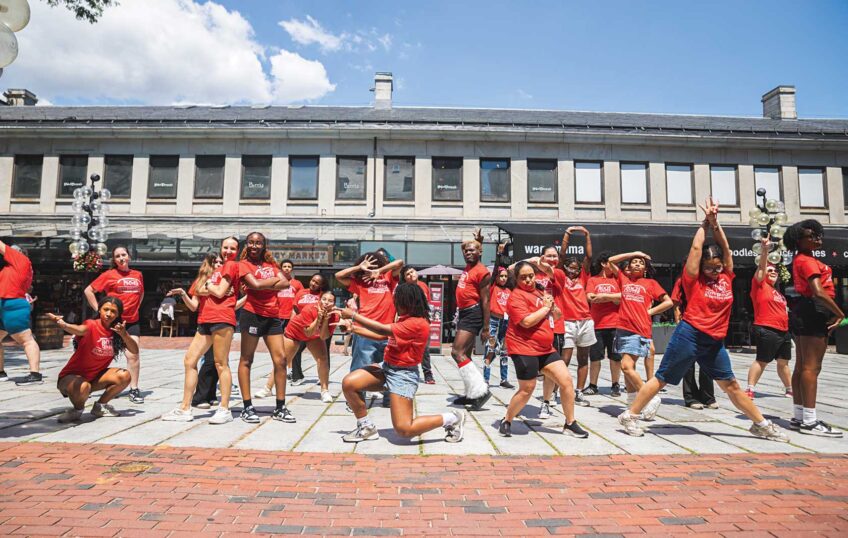Cultivating art: Living plant material is artists’ medium in Gardner Museum exhibition

With its flower-filled courtyard and Monk’s Garden, the Isabella Stewart Gardner Museum has always been a home to both horticulture and fine art. Now through Sept. 17, its exhibition “Presence of Plants in Contemporary Art” presents works by eight artists that incorporate living plants.
Organized by Pieranna Cavalchini, the Gardner’s curator of contemporary art, and Charles Waldheim, its curator of landscapes, the exhibition begins outdoors with a 32-by -16-foot panel on the museum façade entitled “The Declaration of Interdependence” (2023). Australian Natalie Jeremijenko’s environmental manifesto is laced with more than 100 flowering plants, including the Gardner’s signature blossoms, nasturtiums.

Ackroyd & Harvey, left to right: “Netooeusqua / West Woods, Shinnecock Tribal Territory, Long Island, New York” 2023; “Elizabeth Solomon / Muddy River, Fenway, Boston, Massachusetts” 2023, seedling fescue, native and perennial ryegrass, clay, jute. PHOTO: © ISABELLA STEWART GARDNER MUSEUM
Inside the palazzo, a video by Zheng Bo of Hong Kong follows a group in a subtropical Taiwanese forest. Most of the show is in the special exhibition gallery of the museum’s contemporary wing. In the first room are three images fashioned in grass by the UK-based duo Ackroyd & Harvey. Two large portraits of Indigenous advocates for environmental justice are lawns of light and shadow. Another work presents an equation to track energy released from fossil fuels. An elegant sculpture by Piero Golia of Los Angeles pairs living, growing mushrooms with a marble column.
In the main gallery, works by two artists are silent accompanists to a grand installation that transforms the room into a temple. Swedish artist Henrik Håkansson’s wall-mounted cuttings of plants are arranged like musical notes. And Welsh artist Cerith Wyn Evans presents a pair of entwined willow saplings which, slowly rotating on electric turntables, resemble music stands.
Dwarfing these works is “Antoine’s Organ” (2016) by Rashid Johnson of Brooklyn, which with sound and sight celebrates African American culture and history. Within this 16-by-28-by-10-foot grid of black steel is an array of evocative objects, primarily 285 plants (more than 32 species), from huge cala lilies and ferns to tiny succulents, many in pots of assorted shapes and sizes handmade by Johnson in earthen metallic tones.
The display also includes iconic books such as Richard Wright’s “Native Son” and Debra Dickerson’s “The End of Blackness”; and muted monitors playing video loops by Johnson. Surrounded by the greenery and barely visible is an upright piano. The installation’s title is a nod to pianist Antoine Baldwin (aka Audio BLK), whose performances inaugurated the installation. At the Gardner, his seat is taken by 13 students and alumni of the Berklee College of Music and New England Conservatory of Music, whose contemporary jazz improvisations animate the installation daily, from 1 to 3 p.m. and 6 to 8 p.m. every Thursday, throughout the run of the exhibition.
At the keyboard last week was Jonathan Paik, NEC ’23. Visiting from Los Angeles, where he curates the concert series “Fire Spitter,” Paik was invited by his former NEC professor, renowned jazz musician Jason Moran. Paik’s expansive chords and now and then, his pulsing backbeat, induced a meditative mood as visitors viewed Johnson’s intricate structure or gazed through the gallery’s wall of windows at the sky, the majestic trees along the Fenway, and below, the Monk’s Garden.
“I felt suspended in mid air,” said Paik after concluding his two-hour set. “The whole structure is an instrument.”
Of and beyond time, the work and its music bring the gallery, and the show, to glorious life.







